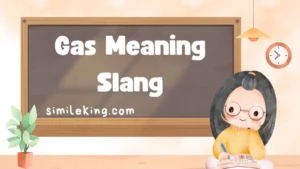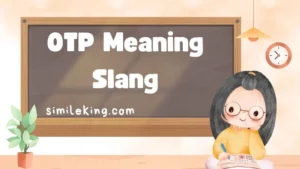Expressing happiness vividly can enliven both spoken and written communication. One of the most engaging ways to convey joy is through similes—figurative language that compares one thing to another using “like” or “as.” The phrase “happy as” is a classic opening to many similes that paint joyful emotions with vibrant imagery. Whether you want to write a poem, spice up your emails, or casually text friends, knowing a variety of similes for “happy as” enhances your expressive toolkit.
This article explores 10+ similes for “happy as”, breaking them down by tone—polite, professional, casual—and context. You’ll learn how to select the right simile depending on the situation, along with examples and tips for effective use.
What is a Simile and Why Use It for “Happy”?
A simile is a figure of speech that makes a comparison, usually highlighting a shared quality. When describing happiness, similes help others visualize your mood by linking it to familiar, often joyful, sensations or images.
For example, “happy as a clam” evokes the idea of someone content and carefree, while “happy as a kid on Christmas morning” brings to mind innocent, exuberant delight.
Similes make writing and speech:
- More vivid and relatable
- Emotionally impactful
- Memorable and creative
10+ Creative Similes for Happy As
Here are over ten similes you can use to express happiness, organized by tone and situation:
1. Happy as a clam at high tide
Tone: Casual, friendly
Meaning: Very content and safe; clams thrive best at high tide, so this simile means being very pleased or secure.
Usage: Informal conversations, storytelling.
2. Happy as a kid on Christmas morning
Tone: Casual, warm
Meaning: Pure excitement and joy, reminiscent of children eagerly opening gifts.
Usage: Informal texts, friendly emails, creative writing.
3. Happy as a lark
Tone: Polite, classic
Meaning: Cheerful and carefree; larks are known for their joyful songs.
Usage: Formal writing, professional communication when appropriate.
4. Happy as a dog with two tails
Tone: Humorous, casual
Meaning: Extremely joyful, so much so that the dog metaphorically has two tails to wag.
Usage: Friendly conversations, social media.
5. Happy as a sunflower in the sun
Tone: Poetic, positive
Meaning: Thriving and cheerful, like a sunflower basking in sunlight.
Usage: Poems, creative or inspirational content.
6. Happy as a bee in a field of flowers
Tone: Whimsical, warm
Meaning: Joyful and busy, surrounded by abundance.
Usage: Casual or creative writing.
7. Happy as a cat in a sunny window
Tone: Gentle, relaxed
Meaning: Content and at ease.
Usage: Casual to polite contexts.
8. Happy as a fish in water
Tone: Neutral, professional
Meaning: Completely in one’s element and satisfied.
Usage: Workplace writing, speeches.
9. Happy as the day is long
Tone: Neutral, can be casual or formal
Meaning: Endlessly happy.
Usage: Versatile phrase for many contexts.
10. Happy as a child with a new toy
Tone: Casual, nostalgic
Meaning: Pure delight and fascination.
Usage: Informal conversations, social posts.
11. Happy as a poet with a new idea
Tone: Professional, creative
Meaning: Excited and inspired.
Usage: Writing, creative industries.
How to Choose the Right Simile Based on Tone and Context
Choosing the best simile depends on the audience and the formality of your setting:
- Professional settings: Opt for neutral or polished similes such as “happy as a fish in water” or “happy as the day is long.” These avoid slang or overly casual imagery while still conveying joy effectively.
- Casual conversations: Feel free to use playful and colorful similes like “happy as a dog with two tails” or “happy as a kid on Christmas morning.” These build rapport and feel relatable.
- Creative writing and poetry: Use similes that evoke strong imagery and emotional resonance such as “happy as a sunflower in the sun” or “happy as a bee in a field of flowers.”
- Polite or formal communication: “Happy as a lark” is a time-tested classic simile that maintains elegance without sounding stuffy.
The Nuances of Tone in “Happy As” Similes
- Lighthearted humor: Similes with animals or children often carry warmth and playfulness.
- Serious or sincere: Similes that evoke nature or timeless ideas tend to be more contemplative.
- Energetic excitement: Similes referencing action or new experiences create an uplifting vibe.
Understanding these nuances helps you match your simile to the mood you want to set.
5 Texting Examples Optimized for Google
Here are five user-friendly texting examples using “happy as” similes, crafted to appear natural and SEO-friendly:
- “I’m happy as a kid on Christmas morning because I got the job!”
Shows pure joy and excitement over good news. - “After that great workout, I feel happy as a lark.”
Conveys lighthearted happiness in a casual context. - “Just finished my favorite book—happy as a bee in a field of flowers right now!”
Expresses contentment and inspiration. - “Spending the weekend with family has me happy as a dog with two tails.”
Casual, relatable simile showing joy. - “Got my promotion today, and I’m happy as the day is long!”
Versatile phrase perfect for professional or personal texts.
Additional Tips for Using “Happy As” Similes
- Match the audience: Avoid overly casual similes in formal emails or professional writing.
- Be original: Feel free to create your own “happy as” comparisons for a fresh twist.
- Keep it relevant: Choose imagery your audience will understand and relate to.
- Don’t overuse: Use similes sparingly for impact rather than redundancy.
Conclusion
Similes are a powerful tool to express happiness vividly and memorably. By learning a variety of “happy as” similes, you can tailor your communication to suit different tones and contexts—whether casual texts, professional emails, or creative writing. Remember, the right simile not only conveys your feelings but also connects emotionally with your audience.
Try incorporating these similes into your daily language and watch your expressions of joy become more colorful and engaging!





